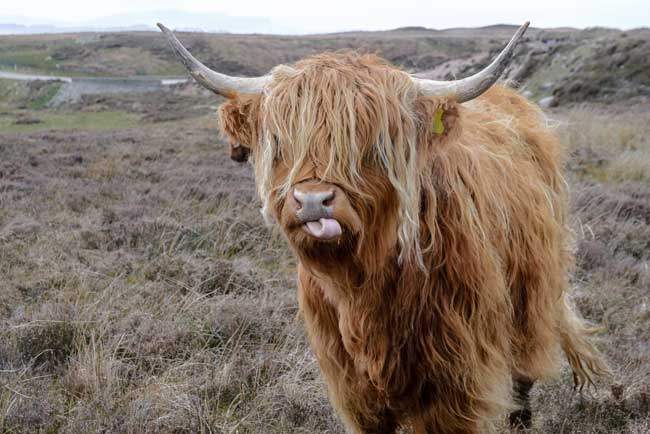

Many of us have watched the show “Pawn Stars” on TV and have marveled at the things people pawn for cash. On our recent trip to the northern-most tip of Scotland, the Orkney Islands, situated in the rough North Sea, I learned of the strangest pawn deal ever – land covering 70 individual islands, 20 inhabited.
Visiting the Orkney Islands
After studying our Orkney Island map, we set out. When we arrived on Mainland, the largest island of this Scottish archipelago, with undulating treeless hills, peat bogs, mountainous, glacial scarred landscape and a people who scoffed at the wretched weather, we sensed that this wild place was not Scottish.
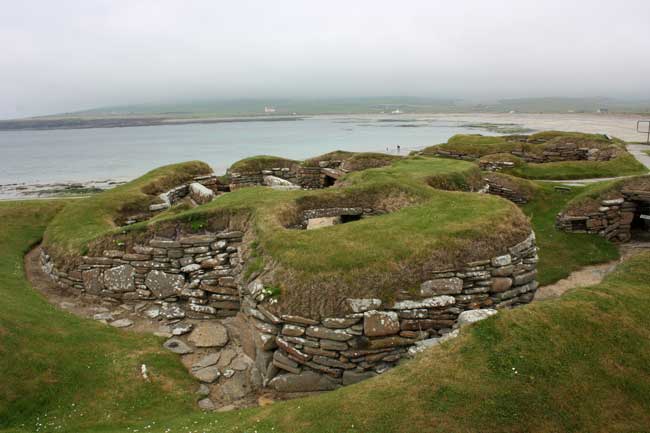
There is proof that human settlement has existed here for 8,500 years. In 875 A.D. the Vikings invaded the islands on their way to pillage Wales. The pirates settled these highlands and like the Old West, there was no law at all. King Harald the Fair of Norway annexed these Northern Isles as an Earldom to the Norwegian Crown, and in 1194, the islands, due to their state of anarchy, came under direct Norwegian rule.
The Islands Pawned to Scotland
In 1469, to calm mounting tensions between Scotland and the Scandinavian region, 13-year-old Margaret, daughter of Christian I, King of Norway, married King James III of Scotland.
Margaret’s father had no funds to pay the dowry of 50,000 Florins and so he offered King James III the Orkney Islands as collateral until the dowry could be raised. By 1472, with the money still owed, Norway handed the islands over to Scotland. The land and its people were pawned.
Today, the residents remain fiercely Scandinavian, evidenced by Norse Mythology in culture, art and music and Orkney’s celebrations that reflect Viking traditions and heritage.
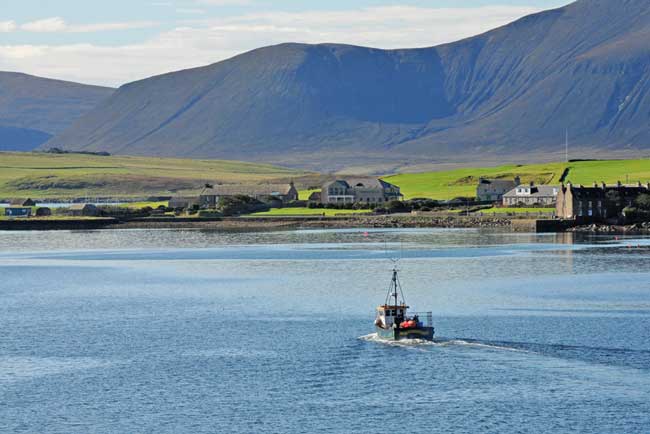
How to Get to the Orkney Islands
We disembarked the Grand Circle 90-passenger ship, Corinthian, at Stromness Harbor. Lobster and crab traps piled high on boats moored along the pier, suggested a lucrative fishing industry.
We delighted in the freshness of that day’s catch at dinner, as the ship’s chef had purchased seafood and salmon at the fish market while we explored the historical roots of this mystical island.
A cluster of red sandstone homes, each with vivid window boxes of petunias, nasturtiums, and blue periwinkle cascading down the walls, hugged the main, one-lane cobblestone road that snaked along the coastline.
The North’s ‘night-less’ summer had spurred clumps of wild flowers to flourish and dance in the stiff breeze and we walked through a splash of color. The North Sea oil boom has put Orkney on the map and the wind turbines provide all the electricity that the island’s 21,000 residents require.
The Stromness Golf Course that edges the dramatic sea cliffs sparked my husband’s urge to play. His childlike excitement made me smile. Next time, he vowed.
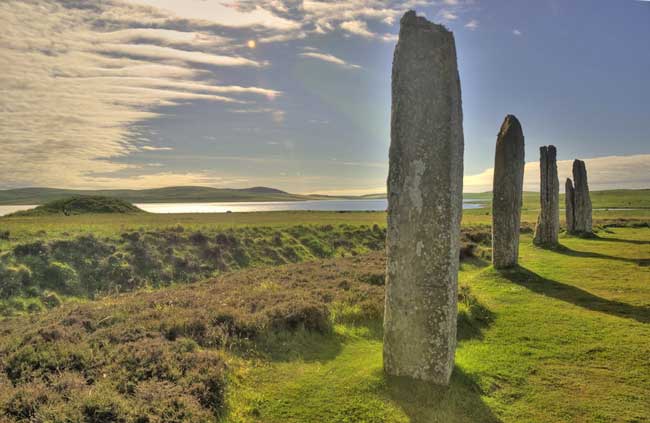
Neolithic Period Archaeological Sites
The area boasts the most Neolithic Period sites in Europe. A visit to Skara Brae, an excavated underground village, older than Stonehenge and radiocarbon dated from 3180B.C. to 2500B.C. proved fascinating. A fierce storm had unearthed eight identical, tiny, stone houses thought to be homes for elflike people with magical powers.
A ring of standing stones on site, from one to five meters high, gave me pause. As we drove along the road which encircles the entire island, we discovered other groups of standing, monolithic slivers of metamorphic rock.
Whenever I encounter prehistoric monuments of ancient people around the world, I come away in awe. What were they thinking when they planted these upright stones in a pattern? Speculation has it that these structures relate to lunar cycles. But who really knows? Traveling usually leaves me with more questions than answers.
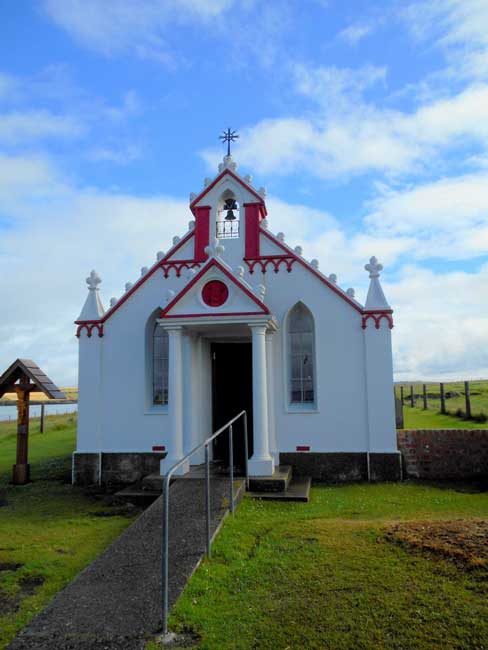
Italian Chapel on Lambholm Island
We crossed a narrow concrete causeway called Churchill’s Barrier that bridges the channel to Lambholm Island, where the Italian Chapel stands.
In 1939, after a German U-Boat entered the inlet of Scapa Flow, then an island base for the Royal Navy and sank the Navy Battleship HMS Royal Oak, Winston Churchill ordered a stone and concrete barrier erected to prevent further invasions.
The British transported 500 Italian soldiers, captured in North Africa to Orkney Island to complete the project. Called Camp 60, the Italian WWII detainees desperately wanted a chapel where they could pray for their families.
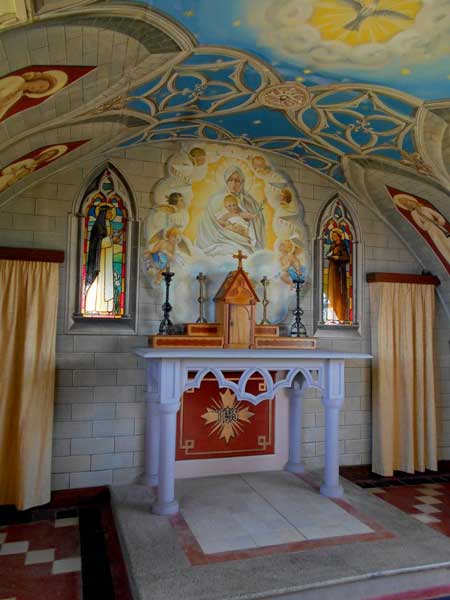
The idea sprang from one of the prisoners, Italian artist, Domenico Chiocchetti, to use an existing Quonset hut as its foundation. With permission from the Camp Commandant, the men transformed the curved structure into a sanctuary, using discarded materials, chicken wire, concrete, glass, and wood obtained from wrecked ships.
When the prisoners weren’t struggling to erect the barrier, they poured their ingenuity and faith into every detail to complete their chapel. They left the island on Sept. 9, 1944, and the residents of Orkney vowed to protect and maintain the men’s work of art.
Allison Graeme, whose father owned the land where the chapel was built, met with us inside the little church to give a first-hand account of her visits to the camp as a child and her endearing memories of interactions with the prisoners.
Chiochetti returned to the island in 1960 in an emotional response to help restore some of the frescoes. Hearing Allison’s stories and lingering in this magnificent example of inspiration turned out to be the surprise of Orkney.

cemetery dating back to the 1100’s. Photo by Carol L. Bowman
Viking Heritage in Kirkwall
We traveled to the northeastern tip to Kirkwall, the capital city of the Orkneys, the key port to catch ferries to Aberdeen, Scotland and the major center of Norse culture.
First mentioned in Scandinavian literature in 1046, history seeps from every crevice in town. A light rain fell as we walked the flagstone paved main-street, and the damp, dreary conditions gave our exploration an eerie, medieval feel. We headed to the center to visit St Magnus Cathedral, the northern-most church in the UK.
Magnus and Rognvald
Norwegian Magnus Eriendsson shared the duties of Earl of Orkney in the early 1100’s with his cousin Hakon, but jealousies brought tragedy when Hakon ordered Magnus killed. Magnus’ nephew, Rognvald decided to build a place of worship to honor his dead uncle.
After laying the first stone in 1137, the structure took over 300 years to finish. The bones of both Magnus and Rognvald are buried within the red sandstone walls of the choir section.
Although the interior of this cathedral displayed magnificent workmanship, I loved traipsing through the wet, high grass in the adjoining cemetery to read inscriptions on the moss-covered tombstones dating back to the late 1100’s. The people under my feet had been in the ground for over 900 years.
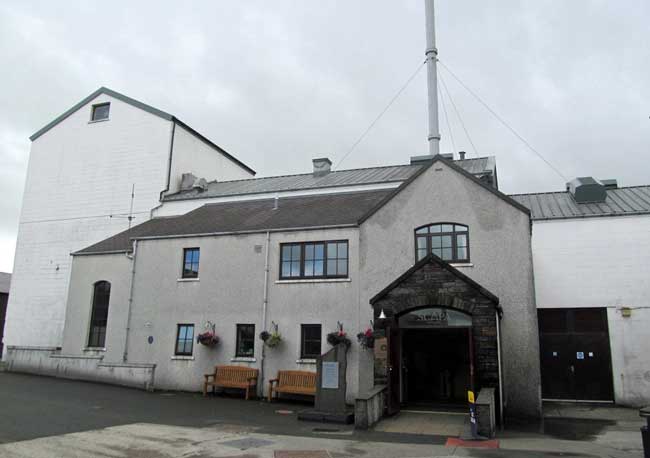
Scapa Distillery
After wrapping my head around all these ancient, island happenings, a visit to the Scapa Distillery to taste strong, single malt, Scotch whiskey seemed like a ‘smashing’ idea.
A young lad placed a ‘wee’ cordial in front of each of us. He poured golden, honeyed intense spirits to half full, then instructed us to throw our heads back, swig the smooth liquor in one gulp and feel the warm, tingly sensation down to our toes. Ahh… what a way to finish a day.
With the chaos surrounding the United Kingdom and Brexit, the islanders jumped at every opportunity to express their opinions. When the UK was voting on whether to leave the EU, the Scottish people voted on whether to separate from the United Kingdom.
The Orkney locals have taken this a step further. They believe that since Norway only pawned the islands to Scotland, if Scotland becomes independent from the UK, some Orcadians want to become part of Norway again. Others prefer to remain under Scottish rule and some want the islands to be totally independent from the UK and Scotland. The events of history keep going ‘round and ‘round, like the circle of standing stones.
***
Coming next month in our two-part series on the Orkney Islands: The Outer Hebrides Islands – Castles, Tweeds and a Runway on the Beach
